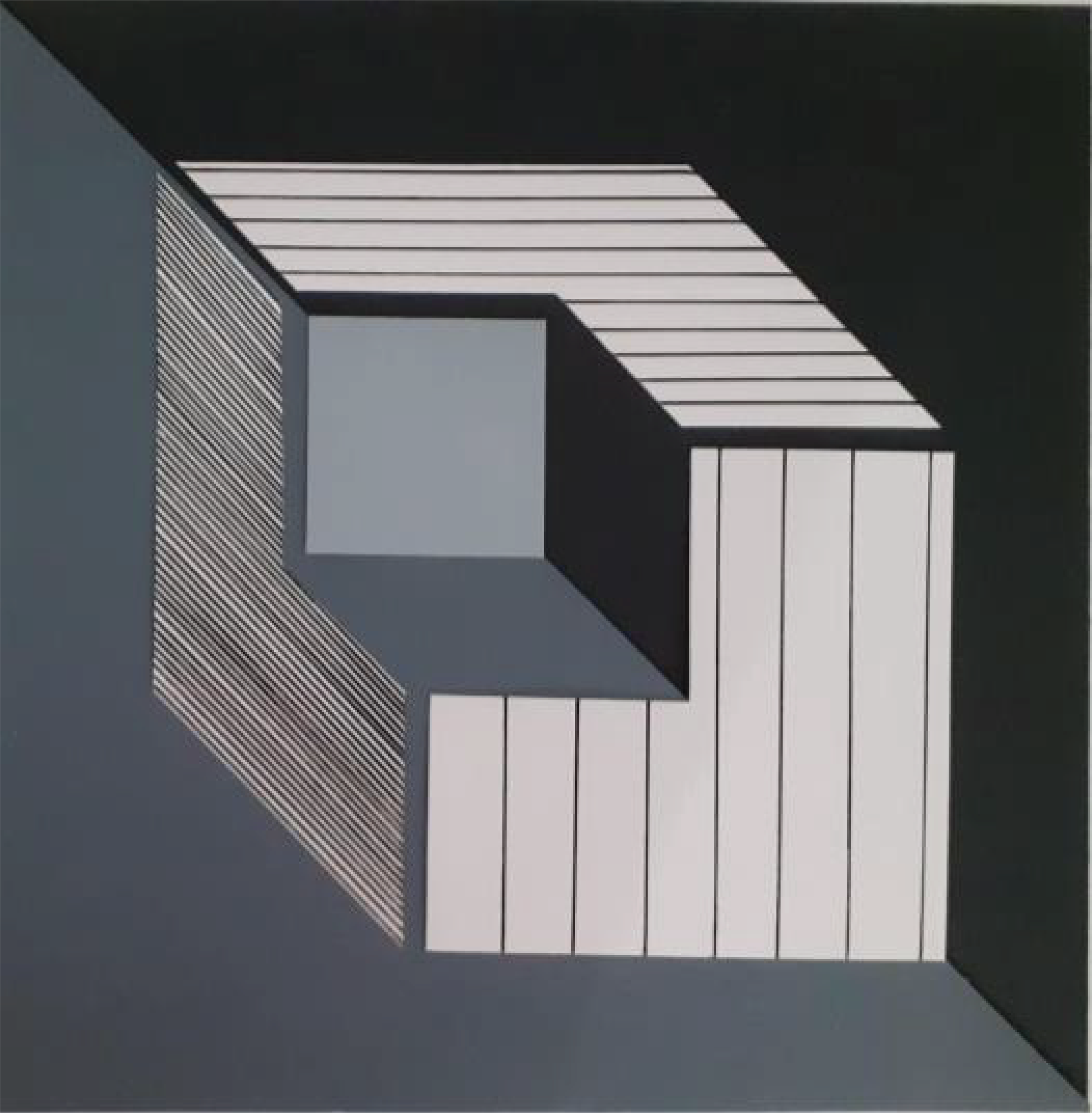
Gestalt Concept
Understanding the phychology behind the human perception of spacial elements
Fall 2020
Prof. Maria Magdalena Campo
The conceptual drawing and model for this project were developed using Gestalt psychology. Emergence is Gestalt’s base concept. It describes the natural human instinct to process images as a whole. It is a way to facilitate the intake of visual information by simplifying complex compositions. In this case, the human brain will naturally process the composition as a cube with a smaller cube shaped portion taken out of it, instead of individually observing each shape. The 3-dimensional composition begins to layer even more objects and patterns, while keeping the same overall perception of the cube. Because the Gestalt concepts provide an insight to how humans perceive shapes, these can also serve to understand how humans perceive space. Elements from the composition were taken to create a wide range of spatial conditions. Linear repetition of panels is extensively used throughout the project as a form of division. Even though most spaces are not contained by solid walls, they are still visually understood as individual spaces. Atriums are also a way of understanding a space. An atrium is typically not a fully enclosed space, but can be visually understood as a larger enclosed space solely created by the continual hole punching of the floors above. Even though the Gestalt concepts are not often used to describe architectural design, they shine a new light in understanding how humans perceive their surroundings and why.

Concept Collage

Concept Model

Interuption of pattern at the entrance for the purpose of wayfinding

Visible interplay between patterns and spacial elements

Switch in transparency to create a feeling of openess and to let in natural lighting

Second Floor-Top View

Physical Model Taken Apart-Circulation

Physical Model Taken Apart-Modular Program

Division of space through path systems

Contrast between tall open space and small modular program

Repetition of elements creating a sense of space




